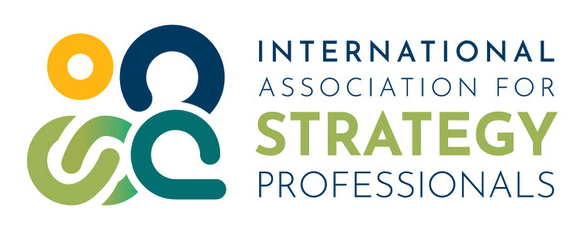By Fon Hah
Abstract
A comprehensive review of risks during strategy development is key to the success of any strategic endeavour. Despite this, recent surveys reveal that mismanagement of strategic risks accounted for around 60% of major declines in market capitalization. Simulating changes in the business environment – by using a model that dynamically captures industry drivers to uncover issues – assists in the development of coping mechanisms and solutions. The objective of this paper is to demystify simulation, outline its benefits in strategy development, and to present three different types of simulations strategists can use – Wargaming, Monte Carlo, and System Dynamics Modelling.
A comprehensive review of risks during strategy development is key to the success of any strategic endeavour. Indeed, recent surveys reveal that mismanagement of strategic risks accounted for around 60% of major declines in market capitalization.1
In this vein, more companies are turning to simulations to minimize risks. Simulation of possible outcomes during strategy development enables executives to better insure their business against downside risks. Indeed, simulating changes in the business environment – by using a model that dynamically captures industry drivers to uncover issues – assists in the development of coping mechanisms and solutions. As Stephen Schwarzman, Blackstone Group CEO, remarked in an interview: Most people see the upside in a potential investment, it is the downside where people fall short.2 The objective of this paper is to demystify simulation, outline its benefits in strategy development, and to present different types of simulations strategists can use.
What is Simulation?
Simulation can be defined as a replica model of a real-world process or system.3 A simulation model highlights cause-and-effect relationships in a controlled environment. It can identify key sensitivities so that the appropriate actions can be developed prior to the occurrence of actual events that may be detrimental to a business.4 For example, the quality of the design of a hydraulic operation can be assessed and optimized using simulation modelling of geophysics to determine fracture dimensions that meet compliance standards.
A simulation model comprises inputs, a process, and outputs:
- Inputs are the key value drivers of a business, where any major mistake in strategy execution can adversely impact the bottom line. Common examples of inputs are selling prices, sales quantities, gross margins, and working
capital drivers. - The process is a representation of the operating business, in its entirety or some of its parts.
- Outputs are the results of the operating business. Common examples of key outputs are earnings before depreciation and tax, operating margins and return on capital.
Any changes to the inputs and/or processes within the simulation model will affect the outputs.
The Role of Simulation in Strategy Development
Strategy is about serving the needs of chosen customer segments in a profitable way to prevail over competitors and maintain profitable growth. The marketplace is essentially a complex adaptive system, with a set of variables (e.g., competitors, regulators, new product releases) that can yield a range of business outcomes, each with different probabilities of occurrence.
Because executives are better served by their management team and advisors if they can be responsive in fluid environments, simulation plays an important role in strategy development.
Firstly, simulation is complementary to strategic planning. Strategic planning enables progression from a current-state to a future-state with pre-defined steps. Each step represents a strategic initiative that, if well executed, can add to profitability. However, as asserted by Henry Mintzberg (1994), strategic planning is based on a linear timeline which does not capture how operational teams will make decisions as challenges arise over the planning period and, as a result, this limitation inhibits strategy development.5 This is where simulation can help build better strategies by modelling the future in a more interconnected manner (as with System Dynamics Modelling) that captures how operational teams would respond to challenges.
Secondly, simulation is complementary to strategy frameworks (e.g., Porter’s Five Forces). Indeed, strategy frameworks are static in nature, highlighting an industry’s structure and level of competition at a particular point in time. They often focus on “known knowns.” In a complementary way, simulation enables the investigation of “known unknowns” or “Black Swan” events and the development of proposed course of actions in advance of these particular events if they were to occur.
Simulation thus enhances strategy development because it increases the level of confidence in projected outcomes based on a disciplined examination of complex dynamic relationships using mathematical principles and system structures. Moreover, simulation enhances organisational capabilities by incorporating big data to drive new insights as well as combining deductive reasoning from top-level executives with inductive reasoning from operational managers, to drive better outcomes.
To illustrate this, let us take the example of an industrial products distribution business whose strategic plan has traditionally comprised organic growth initiatives that focus on increasing the share of wallet with large customers and implementing direct sourcing for gross margin improvements. Unfortunately, this approach has come short as the business has been losing market share these last few years. To cope with this problem, the business decides to think outside the box and use simulation (wargaming in this particular case) to uncover how competitors are taking market share from them and develop a response to these attacks. The simulation model they devised enables them to uncover that specialist providers are offering pre-sales technical advice, launching onsite delivery services that are compliant with safety standards, and proposing product bundles for specific industries (e.g., building and construction). With this information in hand, the industrial products distribution business is then able to devise an innovative way to respond, namely by acquiring specialist competitors whose operational expertise will be used to strengthen its network’s customer service capability.
Three Major Types of Simulations
Strategists can use three major types of simulation in their work: Wargaming, Monte Carlo and System Dynamics Modelling. Each of these types of simulation satisfies Henry Mintzberg’s (1987) 5Ps for effective strategy design: Plan, Ploy, Pattern, Position, Perspective.6 That is, they enable the development of a plan or stratagem based on a wide perspective of a company’s situation that leverages its advantageous position in a consistent pattern of action and behaviour. A shared benefit of these simulation techniques is to enable an organization to be in a state of instant readiness against downside risks.
The objective of a Wargaming simulation is to identify planned actions – covering pre-defined decisions and activity, and the strengthening of functions and operational units – that can neutralise the potential actions of an adversary.7 Wargaming entails a rehearsal of countermeasures that could be deployed when faced with anticipated actions of an adversary.8 For example, in the Persian Gulf War, the extensive use of wargaming by US-led coalition forces – to develop capability planning, force structure validation and to assess the extent to which weapons systems were reliably lethal to enemy forces – enabled the expulsion of Iraqi forces from Kuwait in 1991. This particular simulation’s inputs were the military capabilities, configuration and location of the Iraqi forces. The process was the design and execution of planned strikes known as ‘Desert Storm’ (involving intensive airstrikes against air defences, communication networks and oil refineries of Iraq using Stealth Bombers and cruise missiles). The outcome was the withdrawal from Kuwait by Saddam Hussein’s regime.
The objective of a Monte Carlo simulation is to maximize economic payoff profiles by assessing a range of potential financial outcomes based on the probability of occurrence of random events.9 Monte Carlo simulation entails a risk-return analysis that identifies factors that are likely to affect target outcomes, using probability distribution curves and other statistical measures. For example, companies in the building and construction industry use Monte Carlo simulations to estimate total project costs in light of major variables that cause overruns.10 The inputs of such simulations are the major causal factors of cost overruns (e.g., poor design, unplanned environmental damage). The process is the computation of time and cost to build the physical asset based on assumptions about project scheduling, equipment uptime, and skills availability. The output is a range of cost estimates.
The objective of a System Dynamics Modelling simulation is to study the dynamic behaviour of a system by experimenting with the system itself. A system is a grouping of interacting parts that operate together for a common purpose (e.g., economic system or agricultural system). For example, System Dynamics Modelling is an essential tool when making water resource management decisions. Indeed, when making the decision whether or not to establish a new manufacturing facility near a river basin, a company can, by understanding the complex interactions between the key components of the system, ensure that this course of action will respect minimum environmental regulation. In such a simulation, the input is the level of liquid or hazardous waste from the facility, replenishment rates of fish stock, plants and wildlife, and patterns of river inflows. The process is to identify the linkages among components of the system; determine the equilibrium conditions, feedback loops, stock and flow movements, so that critical inter-relationships between sub-systems that can lead to systemic failures are properly managed and related risks mitigated (e.g., unregulated production of toxic waste into the river that destroys fish stock).11 The output is the regulatory legislation that applies to businesses. This regulation links environmental policy, science and business prerogatives.
Conclusion
To undertake effective simulations in strategy development, it is critical to identify the major risks involved in a business. Simulation will clarify how the risks can be mitigated and value unlocked, enabling the company to be responsive within the complexities of its marketplace.
As simulation complements strategic planning and strategy frameworks, it amplifies a company’s core competencies by enabling it to design stratagems to swiftly respond to complex business challenges and opportunities.
Not all simulations are the same. Companies must choose the right type depending on their needs during strategy development. Wargaming is more commonly used to devise innovative competitive actions while Monte Carlo is well suited to maximise economic payoffs and systems dynamics is best at capturing the interactions between components within a system to preserve its overall balance. Whichever simulation type is best, reaping maximum benefits rests on properly applying the tool to make a powerful impact.
References
1 Lam, J., & IMA. (2016). Strategic Risk Management: Optimising The Risk-Return Profile. Institute of Management Accountants.
2 Leaders with Lacqua [Interview]. (2019, October). Bloomberg TV.
3 The AnyLogic Company. (2016). Developing Disruptive Business Strategies with Simulation. Whitepaper.
4 Janekova, J., Fabianovia, J., Izarikova, G., & Onofrejova, D. (2018). Product Mix Optimisation based on Monte Carlo Simulation: A Case Study. International Journal of Simulation Modelling, 17.
5 Mintzberg, H. (1994). The Fall and Rise of Strategic Planning. Harvard Business Review.
6 Mintzberg, H. (1987). The Strategy Concept 1: Five Ps of Strategy. California Management Review, 30(1).
7 UK Ministry of Defence, Development, Concepts and Doctrine Centre. (2017). Wargaming Handbook.
8 Perla, P. (2012). The Art of Wargaming.
9 Brandimarte, P. (2014). Handbook in Monte Carlo Simulation: Applications in Financial Engineering, Risk Management and Economics. Wiley.
10 Defence Research and Development Canada. (2016). Using Monte Carlo Simulation to mitigate risk of project cost overruns.
11 Bala, B. K., Arshad, F. M., & Noh, K. M. (2017) Systems Dynamics Modelling and Simulation. Springer.
About the Author
Fon Hah is Chief Financial Officer of a unified communications company, with Alcatel-Lucent Enterprise as a strategic partner. He is a Chartered Accountant of Australia and New Zealand. Having trained at PWC and KPMG, he led corporate strategy and mergers and acquisitions functions at Microsoft, Wesfarmers, and Suncorp in Australia. In addition, Fon served the Australian Department of Defence (Airforce and Navy) as a special consultant. He serves on the Board of The Brain Foundation, a neuroscience charity. He holds a Masters of Applied Finance from Macquarie University.
E: This email address is being protected from spambots. You need JavaScript enabled to view it.







